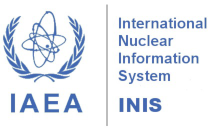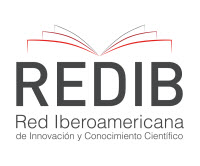Synthesis and characterization of Au- 198 nanoparticles for radiotherapy
DOI:
https://doi.org/10.15392/2319-0612.2024.2753Keywords:
Gold nanoparticles, Nanobrachytherapy, Polyethylene glycol (PEG)Abstract
In recent years, rapid progress in nanotechnology has stimulated growing interest in nanoparticle research, particularly in the fight against cancer, a leading cause of death worldwide. Currently, gold nanoparticles (AuNPs) are being studied as an alternative to conventional cancer treatments, which, despite their effectiveness, face challenges such as side effects due to low selectivity. This work focuses on the synthesis of AuNPs functionalized with polyethylene glycol (PEG) in both their non-radioactive and radioactive forms and on their physicochemical properties. The AuNPs functionalized with PEG were produced using the adapted Turkevich method, and their physicochemical characteristics were analyzed using Dynamic Light Scattering with Zeta Sizer (DLS), UV-Vis spectroscopy, and transmission electron microscopy (TEM), assessing the effect of the amount of sodium citrate, as a reducing agent, on the size of the nanoparticles. The results showed a hydrodynamic diameter of 22.62 nanometers, a surface charge of - 0.1269mV, and an average size of 12.12nm as measured by TEM. The studies were conducted with radioactive gold-198 nanoparticles, and their presence was confirmed by an HPGe detector.
Downloads
References
[1] MISRA, R.; ACHARYA, S.; SAHOO, S. K. Cancer nanotechnology: application of nanotechnology in cancer therapy. Drug Discovery Today, v. 15, n. 19-20, p. 842-850, 2010. DOI: https://doi.org/10.1016/j.drudis.2010.08.006
[2] BLANCO, E.; SHEN, H.; FERRARI, M. Principles of nanoparticle design for overcoming biological barriers to drug delivery. Nature Biotechnology, v. 33, n. 9, p. 941-951, 2015. DOI: https://doi.org/10.1038/nbt.3330
[3] SINGH, R. K.; KNOWLES, J. C.; KIM, H.-W. Advances in nanoparticle development for improved therapeutics delivery: nanoscale topographical aspect. Journal of Tissue Engineering, v. 10, p. 2041731419877528, 2019. DOI: https://doi.org/10.1177/2041731419877528
[4] MOGHIMI, S. M.; HUNTER, A. C.; ANDRESEN, T. L. Factors controlling nanoparticle pharmacokinetics: an integrated analysis and perspective. Annual Review of Pharmacology and Toxicology, v. 52, p. 481-503, 2012. DOI: https://doi.org/10.1146/annurev-pharmtox-010611-134623
[5] ZHANG, N.; XIONG, G.; LIU, Z. Toxicity of metal-based nanoparticles: Challenges in the nano era. Frontiers in Bioengineering and Biotechnology, v. 10, p. 1001572, 2022. DOI: https://doi.org/10.3389/fbioe.2022.1001572
[6] KLIBANOV, A. L.; MARUYAMA, K.; TORCHILIN, V. P.; HUANG, L. Amphipathic polyethyleneglycols effectively prolong the circulation time of liposomes. FEBS Letters, v. 268, n. 1, p. 235-237, 1990. DOI: https://doi.org/10.1016/0014-5793(90)81016-H
[7] MUHAMMAD ARIF, A.; FAZAL NAWAZ, A.; KHAN, S. U.; MUEEN, H.; RASHID, F.; A. HEMEG; RAUF, A. Nanotechnology-based radiation therapy to cure cancer and the challenges in its clinical applications. Heliyon, v. 9, n. 6, 2023. DOI: https://doi.org/10.1016/j.heliyon.2023.e17252
[8] TURKEVICH, J.; STEVENSON, P.; HILLIER, J. A study of the nucleation and growth process in the synthesis of colloidal gold. Discussions of the Faraday Society, v. 11, p. 55, 1951. DOI: https://doi.org/10.1039/df9511100055
[9] FERREIRA, M. et al. Técnicas de Nanocaracterização. 1ª. ed. Rio de Janeiro: Elsevier, v. 3, 2015. ISBN 978-85-352-8091-3.
[10] CALLISTER JR., W. D. Materials Science and Engineering: An Introduction. 7ª. ed. New York: John Wiley & Sons, 2007.
[11] ROEBBEN, G.; RAUSCHER, H. Towards a review of the EC Recommendation for a definition of the term “nanomaterial”, Part 2: Assessment of collected information concerning the experience with the definition. JRC Scientific and Policy Reports. Luxembourg. 2014.
Downloads
Published
Issue
Section
License
Copyright (c) 2025 Maria Eduarda Zaganin Rigo, Angelica Bueno Barbezan, Cristhian Talacimon, Lara El Hajj Teodoro, Priscila Santos Rodrigues, Wilmer Alexander Arcos Rosero, Thuany Correa Nogueira, Maria Elisa Chuery Martins Rostelato

This work is licensed under a Creative Commons Attribution 4.0 International License.
Licensing: The BJRS articles are licensed under a Creative Commons Attribution 4.0 International License, which permits use, sharing, adaptation, distribution and reproduction in any medium or format, as long as you give appropriate credit to the original author(s) and the source, provide a link to the Creative Commons license, and indicate if changes were made. The images or other third party material in this article are included in the article’s Creative Commons license, unless indicated otherwise in a credit line to the material. If material is not included in the article’s Creative Commons license and your intended use is not permitted by statutory regulation or exceeds the permitted use, you will need to obtain permission directly from the copyright holder. To view a copy of this license, visit http://creativecommons.org/licenses/by/4.0/






















